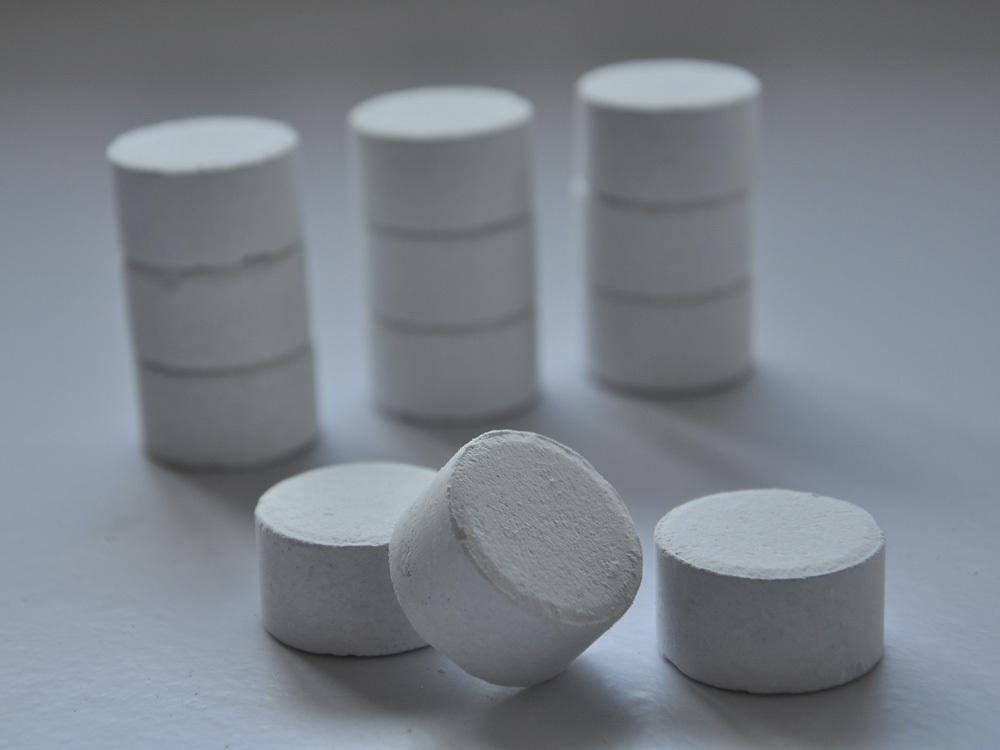30
2013
-
05
The application of the calcium hypochlorite in the swimming pool

Common sterilization methods:
In order to control pollution harmful bacteria virus transmission, must be in the loop, security configuration sterilization device, usually the most commonly used disinfectants with bromine and chlorine compounds, and its compounds.
Bromine and chlorine can kill bacteria, viruses, and algae, and oxidation. Elemental bromide at room temperature, which is red brown liquid, used in swimming pool disinfection is granular methyl containing bromine and chlorine compounds. To join this kind of compounds in the circulatory system, and the separating time bromate and hypochlorite.
Cost is higher than the chlorine disinfection of bromine and disinfection, but its widely applicable pH range. Under the condition of soft water, appropriate USES bromide as a disinfectant, its concentration should be keep in 4 ~ 6 mg/L.
Hypochlorous acid were the main disinfectant, its mechanism is: through the microbial cell walls, violation of microbial protein and enzyme system. Eliminated by oxidation of organic and inorganic pollutants in the water.
The source of the hypochlorous acid calcium hypochlorite or chlorine gas. Calcium hypochlorite is calcium hydroxide to absorb chlorine after the formation of granular material, for the stability of the compounds.
Calcium hypochlorite we'll release chlorine dosing to water, thus it can be used as a pool of disinfectant. Adding the calcium hypochlorite can make higher calcium ion concentration and pH value of the water, it is good for the use of soft water of swimming pool. Should have enough quantity of chlorine, keep the residual chlorine in the pool in 0.4 ~ 0.6 mg/L; When a high concentration of organic matter in water, can appear NH2Cl, a mixture of NHCl2 and NCl3. This is by chlorine molecules react with nitrogen compounds in the water. Thus lost the disinfection effect, especially NCl3 can make the water send out a bad smell. More chlorine dosing quantity only, ability makes NCl3 decomposition, the concentration of chlorine in the water at this time no longer continue to rise, only after NCl3 decomposition will continue to rise, namely the so-called fold point chlorine professionally.
When swimming pool for a period of time failed to add enough fresh water, the water of Cyanuric Acid Cyanuric Acid) content is too high, there will be chlorine locking phenomenon, namely the chlorine mainly by two or three chlorine molecule is in the form of a consortium, thus losing the disinfection effect. For cyanuric acid concentration of what happens when this kind of situation has not yet been determined, it is generally believed the concentration of chlorine in about 160 mg/L lock effect is most obvious. Pool chlorine after locking, increasing chlorine dosing quantity can alleviate the situation, or is added a lot of fresh water, but too much chlorine will cause certain harm to human body, hydrating and frequently causes a large amount of waste of water resources; Cyanuric acid, on the other hand, can have the effect of chlorine stabilizer, it keep in low concentration in the water is good, can avoid the consumption of the ultraviolet ray in sunshine the residual chlorine in the water. Usually in the form of particulate matter is added to the water, also can be in dichloride consortium or chemical dissolves in the water in the process of the generation: chlorine consortium split into separate chloride molecules, producing cyanuric acid. Therefore, if the pool cic chloride complexes, there is no need for extra chlorine stabilizer. However, when using sodium hypochlorite, or calcium hypochlorite as a disinfectant, chlorine stabilizer you need. Should pay attention to avoid the above material mixed in dry condition, so there will be dangerous; Under special circumstances, can be in the water in the case of adding the excess sodium hypochlorite, or calcium hypochlorite, form high chlorine concentration, inhibit the growth of algae and reduce the unpleasant smell of chloroform, also together to destroy organic pollutants. In addition, one-time excess chlorine gas, has the chlorine concentration reached the pond
About 10 mg/L, which can effectively prevent bacteria and algae breeding, however, when the pool contains a lot of the associativity of chlorine, to the person's skin, hair, eyes, teeth can cause discomfort, the disinfection by-products chloroform may cause severe damage to kidney and liver.


